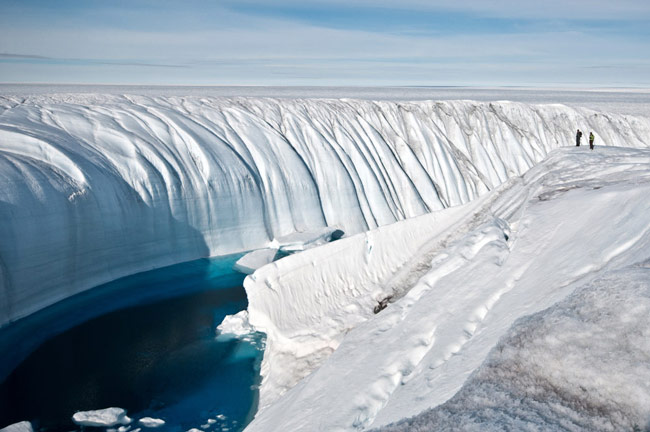New research conducted by an international team of geoscientists, including Trinity Research Fellow in Geology, Dr Alan Vaughan, has indicated that ancient heat sources within the Earth’s crust are responsible for the rapid melting of Greenland’s ice sheet.
The team has found that processes deep in the Earth’s mantle are coupled with the flow dynamics and subglacial movement of water through large ice sheets. This research, it is hoped, will lead to an improved understanding of the opening history of the Arctic Ocean.
In a press release, Vaughan, who is a co-author on the paper that has just been published in leading international journal Nature Geoscience, said: “This study demonstrates an unexpected link between hotspot history and ice sheet behaviour.”
He added that it “shows that the influences on ice sheets span a huge range of timescales from the month by month changes of the ice cover to the multi-million year epochs over which the Earth’s mantle and tectonic plates evolve”.
Using sophisticated computer models, the research team combined data from seismology, gravity measurements, ice core drilling campaigns, and radar sounding, as well as both airborne, satellite and ground-based measurements on the thickness of the ice cover.
The results suggest that 50 per cent of the ice-covered area in central-northern Greenland is melting from below, and that the meltwater is routed to the ocean through a dense hydrological network beneath the ice.
Irina Rogozhina, from the GFZ German Research Centre for Geosciences, who also led the research team, said: “The geothermal anomaly which resulted from the Icelandic mantle-plume tens of millions of years ago is an important motor for today’s hydrology under the ice sheets and for the flow-rate of the ice.”
She added: “This, in turn, broadly influences the dynamic behaviour of the large ice sheets and must be included in studies of the future response to climate change.”
Increased sliding at the base of the ice of the zone of elevated heat flow has created an area of rapid ice flow over a distance of 750km, which transports ice from the summit area of the Greenland ice sheet to the North Atlantic Ocean.
The North Atlantic Ocean is known for being an area of active plate tectonics on the earth. These processes moved Greenland over an area of abnormally hot mantle material between 80 and 35 million years ago. As this mantle heated and thinned, it created a zone of 1200km long and 400km wide below Greenland, where the present day flow of heat from the Earth’s interior rises up from.
This ancient, long-lived source of heat has created a region where subglacial meltwater is more abundant, lubricating the base of the ice and making it flow more rapidly. These have been hidden until now by the 3km of thick ice sheet covering the landmass.







